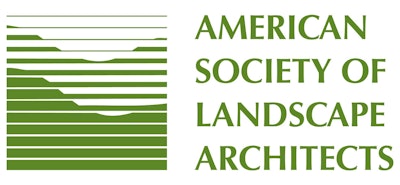The American Society of Landscape Architects (ASLA) recently released its ASLA 2019 Diversity Summit Report. This report highlights action items and strategies to help increase diversity in the profession of landscape architecture.
During the opening remarks on day one of the summit, the following key themes were expressed:
- Micro-aggressions in white, male-dominated firms
- Lack of spaces that facilitate solidarity and center the issues of marginalized identities
- Tokenism and stories of identity responsibly
- Methods to attract a diverse profile of landscape architects
- Responsibilities within landscape architecture and how the profession functions to support underserved/marginalized/vulnerable communities as a healing, regenerative, and reconciliatory profession versus active colonialism and active gentrification
- Bridging the disconnect and striking a balance between landscape architecture schooling and work-life
- Accompliceship (over allyship)

After identifying these themes, ASLA past president Perry Howard FASLA laid out a few objectives for the summit, such as to entertain any unmet 2018 goals and work plan issues; engage in advocacy discussions; think more deeply and in more complex ways about inclusion, diversity and equity; explore strategies for ASLA to advance its efforts for inclusion, diversity and equity; and tackle pressing issues facing diverse communities and/or vulnerable communities.
“The goal of this assignment was to compile a list of real-world problems impacting underrepresented and/or marginalized identities and advise ASLA on the development of a narrative that positions ASLA, landscape architects and the profession as problem-solvers to diverse audiences,” ASLA states in the report.
Solutions
To try and answer the question of how can ASLA make diversity structurally integral to the concept of landscape architecture, the group decided on a few courses of action.
Support network
ASLA says they plan to establish a minority ASLA Professional Practice Network (PPN), as well as a speakers’ panel and a directory of small firms. The group also says they plan to establish a variety of educational resources for People of Color (POC), including web-based initiatives and informal opportunities for networking.
Accountability benchmarks
ASLA says they will also continue to provide diversity training for ASLA leadership, as well as train ASLA leadership on accompliceship. The group says they also plan to build in tangible rewards to firms that demonstrate advancements in the work for inclusion, diversity and equity.
ASLA says they plan to also encourage leader-audits about diversity/processes to hold people accountable for diversity, and they will implement strategies that incentivize cultural competency in landscape architecture work.
Finally, ASLA says they will facilitate financial access to the landscape architecture career path through scholarships and other funding opportunities.
Deeper diversity perspectives
Lastly, the group says they plan to further investigate and promote deeper perspectives of diversity by highlighting nontraditional role models, along with telling stories of landscape architects from diverse backgrounds in a responsible, non-tokenizing way that will also increase their visibility and create other avenues of responsible representation.
ASLA says they also plan to develop a best practices brochure for firms and universities that will help encourage work culture and curricula transformation. The group also wants to find ways to capture work carried out in diverse communities while implementing special rewards, and they want to create a database of diverse, engaging speakers.
“Phase Two (2019-2020) of the new strategic engagement model will focus intently on strategies to prepare ASLA members and chapters to adopt and implement engagement outreach strategies to increase educators, new strategic partners and STEM stakeholders; optimize a contemporary paradigm whereby messaging and resources are developed to showcase unique solutions landscape architects apply to real-world problems; and establish ASLA national position, values and goals for diversity, equity and inclusion through an awareness campaign for firms, institutions and individuals,” ASLA states in the report. “Together, these strategies will serve to educate and engage young people in the profession of landscape architecture and position ASLA members and chapters to implement and measure.”











